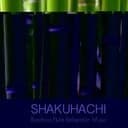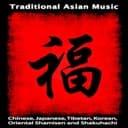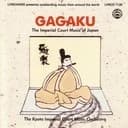Historical and Cultural Context
The Hirajoshi scale originates from traditional Japanese music, where pentatonic scales formed the foundation of court music (gagaku) and folk traditions. Unlike Western major and minor scales, Japanese scales emphasize intervals that create subtle tension and release, reflecting aesthetic principles of wabi-sabi and mono no aware—the beauty of impermanence and restraint. The Hirajoshi scale specifically features a characteristic minor second interval between the first and second degrees (F# to G#), followed by a larger interval that creates its signature melancholic yet stable character. This scale was historically used in koto, shakuhachi, and shamisen music, and has been adapted by Western composers seeking to evoke Eastern atmospheres or explore non-diatonic harmonic landscapes.
Musical Character and Emotional Expression
The F# Hirajoshi scale produces a dark, contemplative sound that balances tension with resolution. The half-step movement from F# to G# creates immediate tension, while the absence of a perfect fifth above the root (no C# as the fifth degree) gives the scale an open, suspended quality. The interval structure—half step, whole step, major third, half step—creates a unique melodic contour that avoids Western harmonic expectations. Musicians often describe the Hirajoshi scale as sounding mysterious, introspective, or melancholic, making it ideal for meditative passages, ambient compositions, and jazz improvisations that seek modal color outside conventional minor scales. The scale's asymmetrical intervals prevent predictable melodic patterns, encouraging creative phrasing and unexpected harmonic movements.
Practical Applications for Musicians
Guitarists and pianists can use F# Hirajoshi to add exotic flavor to compositions in F# minor or related keys. The scale works particularly well over drone-based harmonic structures, modal vamps, or minimalist progressions that emphasize tonal centers rather than functional chord progressions. Jazz improvisers often employ Hirajoshi over altered dominant chords or as a substitute scale for minor contexts, creating angular, non-diatonic lines. In composition, the scale excels in film scoring for scenes requiring mystery, cultural specificity, or emotional introspection. Keyboardists can build chords using scale tones—such as F#m(add9) or C#sus4—to create harmonic textures that complement the melodic material. Practice approaches include playing the scale in parallel and contrary motion, exploring intervallic patterns, and combining Hirajoshi with chromatic approach tones for increased harmonic sophistication.
Relationship to Western and Japanese Scales
While F# Hirajoshi shares the key signature and tonal center with F# Natural Minor, its pentatonic structure and unique intervals distinguish it from both the natural minor and F# Major scales. Compared to other Japanese scales, Hirajoshi sits between the darker, more dissonant F# Iwato scale and the brighter F# Yo scale. The Hirajoshi scale can be understood as a mode derived from the natural minor scale with the fourth and seventh degrees omitted, but this Western analytical framework only partially captures its cultural and sonic identity. Musicians exploring Japanese scales should compare Hirajoshi with the Kumoi and In scales to understand the full spectrum of traditional Japanese pentatonic systems and their expressive possibilities.





